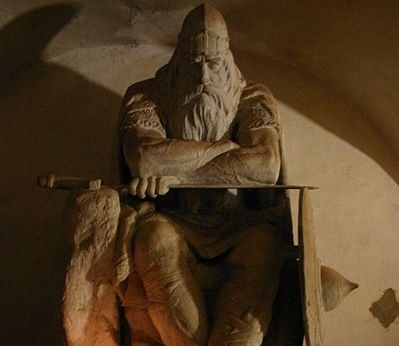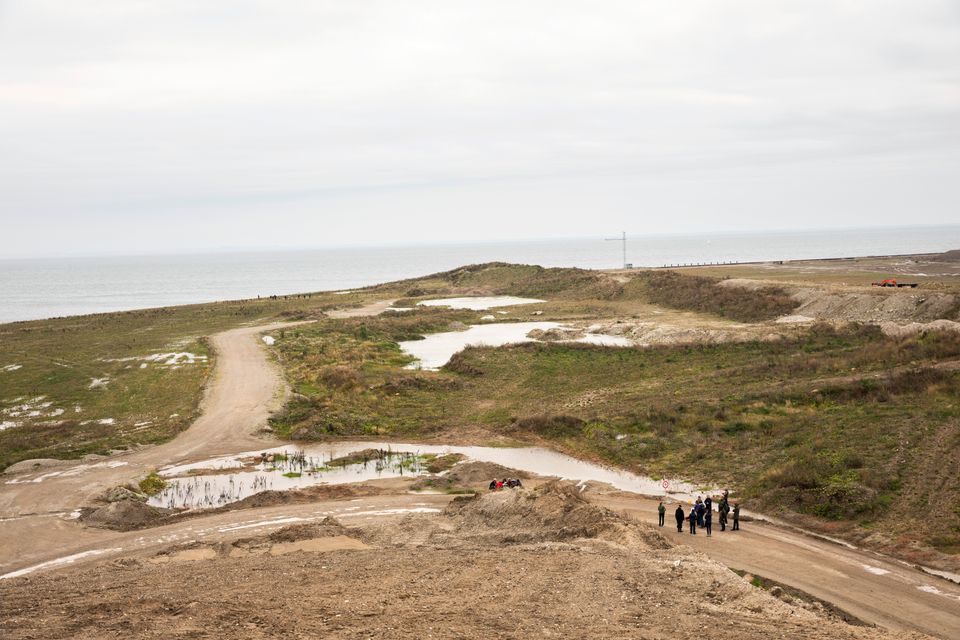Deep down in the murky casemates of the renaissance bastion of Hamlet’s Kronborg Castle in Helsingør sits the redoubtable figure of Holger Danske – Holger the Dane. His back firmly turned away from the outside world, Holger, who guards over all that is quintessentially Danish and who symbolises the very spirit of Denmark, drowses serenely on, his arms firmly crossed over his sword and long white beard, his shield at his feet.
Local mythology has it that Holger will wake up and come to Denmark’s rescue in its hour of need. Meanwhile, sleep is very much the order of the day for Holger, who slumbers on dreaming of the Danes’ past glories.
Holger, who may actually not be Danish, but French, last woke up during the Nazi occupation in World War II in the form of the Holger Danske resistance organisation. Formed 75 years ago, and activated a year later, it was the biggest grouping in the Danish resistance movement.
Was that EU Holger?
Since then, all has been silent. Holger has remained tacit during the nation’s post-war relationship with Europe, its frequent referenda on participation in the European Union and its traumas about Brussels. But the securing of opt-out clauses that allowed for Danish adherence to the Maastricht Treaty on closer European co-operation – 25 years ago this February – had a distinctly ‘Holger touch’ about it!
The legend of Holger the Dane is a conglomerate of many fairy-tales. His sleep dates back over a millennium to the time of Charlemagne. Historians are still not sure whether there ever was a real Holger, or if there was, whether he was actually Danish.
A 15th century French medieval ballad about Holger, who defeated a heathen giant in David vs Goliath-style combat and won the hand of the fair maiden Gloriant, is one of the sources of the myth. Something of a composite Carlovingian hero, Holger – or to mention some of his other aliases: Autchari, Othgerius, Ogerus, Ozziarus or Ogier le Danois (Ogier the Dane), a possible misinterpretation of Ogier l’ Ardennois (Ogier of the Ardennes) – was in all likelihood never Danish
Imaginative and intricate
Other versions of the story have our hero as the fictive son of Danish King Godfred, fighting at different times both for and against Charlemagne, but finally siding with the king of the Franks to successfully fend off Saracen invasions. The reward for these efforts was the throne of Denmark.
Equally colourful and historically inaccurate were medieval songs relating Holger’s successful defence of Denmark against the Ostrogoths in the 5th century. To further complicate matters, other tales, legends and songs feature Holger fighting in Asia and in other distant realms as a crusader and returning home to Denmark after suffering recurrent bouts of homesickness.
Already widely known in 15th century Denmark, the tale of Holger entered Danish mythology to stay in 1534 with the publication of ‘The Chronicle of Holger Danske’ by Christiern Pedersen, a Danish version of the earlier tale based on French medieval sources. The story is the subject of a famous Hans Christian Andersen fairy-tale written in 1845
War-time figure
From then on, Holger’s immortality was assured and he became a useful symbol to unite Denmark at times of national crisis. Holger’s image instilled a sense of collective security and fervent nationalism in Danes during centuries of protracted wars with Sweden and Germany, and during the German occupation of World War II.
Built in 1985, the famous Holger statue that thousands of tourists visit at Kronborg Castle isn’t the original. In fact, even the original wasn’t the original. Sculpted by H P Pedersen-Dan in 1906, it was made in plaster to produce a bronze version commissioned by Hotel Marienlyst. Iin 1985, the cellar suffered water damage, and the castle replaced it with a concrete version.
Strictly speaking, the original was the bronze version at the entrance to the coastally-situated Marienlyst Hotel in the northern outskirts of Helsingør – or it was. It now sits in the middle of the Mid-Jutland town of Skjern after a local business consortium paid 3.2 million kroner for it in an auction on Lauritz.com in 2013.














